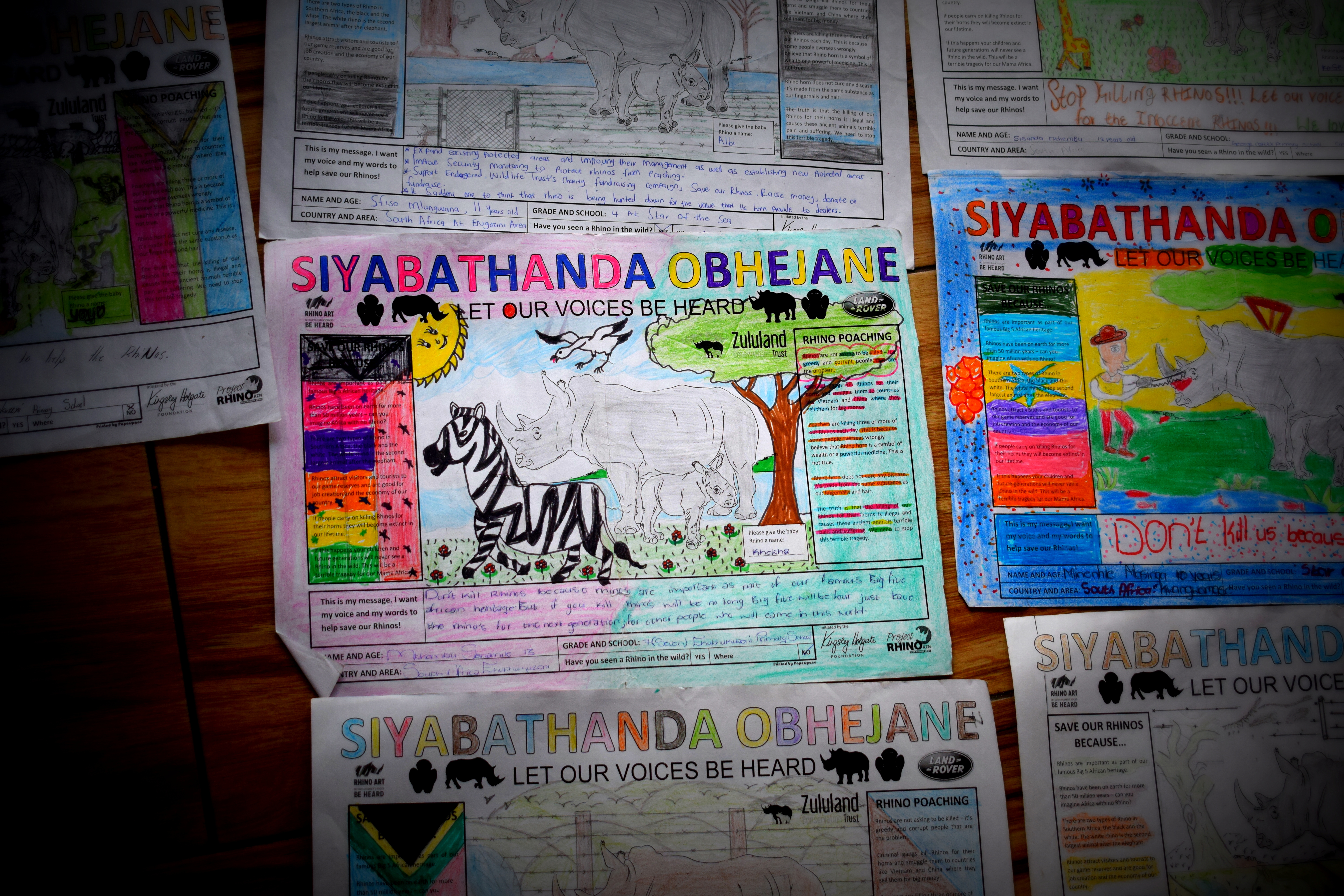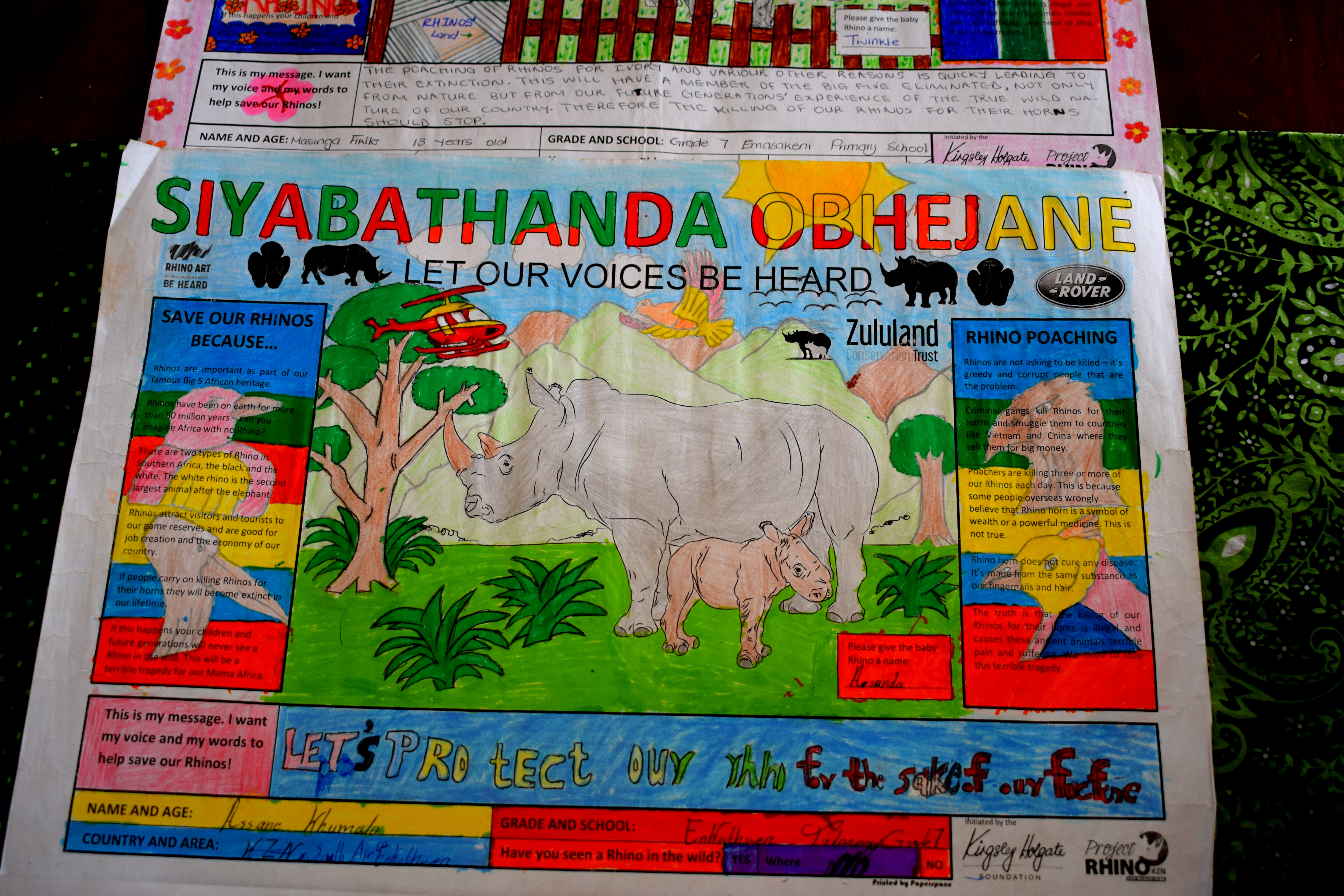Project Rhino KZN and the Kingsley Holgate Foundation joined forces in April 2013 to make Rhino art a broad project. That is how the largest youth-oriented campaign for the conservation of rhinos and other wild animals began. In 2015, the campaign had already reached 200,000 children in South and Central Africa. In this campaign, children are motivated to express their thoughts and feelings about rhino poaching. Through this campaign, local communities are involved who are often only silent witnesses of the war surrounding rhino poaching, the level of knowledge among young people about nature conservation is raised and a platform is created where there is more public support around rhino poaching.
In 2014, the Rhino art campaign went further than just Africa. In May 2014, the Rhino Art campaign reached 4900 Vietnamese students. Participating Rhino art students also participated in the World Youth Wildlife Summit (formerly World Youth Rhino Summit), which made the participating students wild life ambassadors. As a result, they had enough knowledge and tools to make their voices heard in Vietnam about poaching and calling for it to stop.

Let the children's voices be heard. Rhino art is considered the most successful initiative for youth art with a clear message about nature conservation. The aim is to collect the largest number of children's voices / children's art ever as a means to preserve rhinos and other wild animals. The children's art and messages are used as a worldwide call to action against rhino poaching.

The success factors of Rhino art.

A simple sheet of A3 paper with a rhino sketch is a passport to reach tens of thousands of school children with a message about rhino conservation, and most importantly, to receive their feedback and perspectives. The success lies in its simplicity. The project uses the following method:
Plan school visits: we look at which schools can be visited and when (think of schools close to each other in the region).
Contact is then sought with the school management for permission and to agree on a date.
Phase 1 The day of the school visits.
The students of the school come together in a high-energy environment created by dance and singing.
The main speaker gives an interactive presentation that will at least contain the following points.
A representative of the nature conservation program then addresses the children about the elements of nature conservation, the scientific aspects of rhinos, and why they are important for ecology.
Rhino art competition.
After the presentations, the Rhino art competition will be explained. The Rhino art competition consists of four simple rules.
The school director closes the presentation and receives the Rhino art certificate that confirms that the school has participated in the program. The school also receives enough A3 Rhino art drawings and coloring materials.
Phase 2 Assessing the Rhino art.
The team returns two weeks later to review the art. Winners are chosen and receive a certificate of merit. An overall school winner is also chosen based on the quality of the art and the written message. The overall winner receives a prize (the prize varies: a bicycle, a day out, etc.)
A school evaluation report is completed and signed to verify that the school has participated in the program and how many students have participated. After completion of an area, an interschool Rhino art football match is organized. The winning team receives medals and the Man of the Match receives a prize. During this energy-rich event, the message of rhino conservation is repeated and all students, players and spectators participate in vocals that spread a "stop rhino poaching" message.

The tens of thousands of sincere messages received through the Rhino art program calling for the end of rhino poaching led to the recognition that the children's voice had to be heard and strengthened by a larger audience including the leadership of the government. This resulted in the World Youth Wildlife Summit (every year in September). Young people from different countries meet to discuss critical issues related to rhino poaching and natural crime.